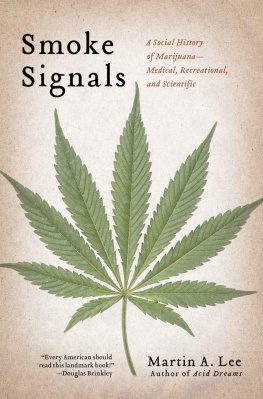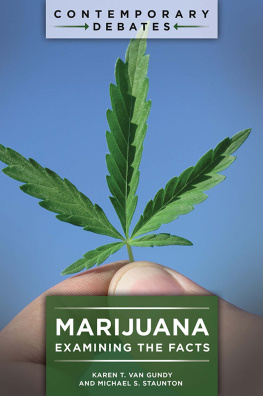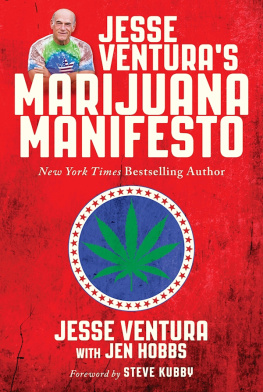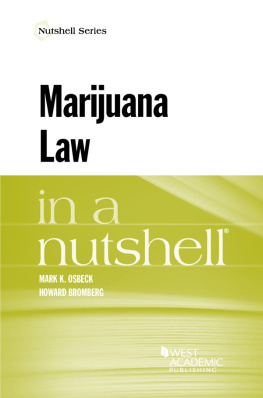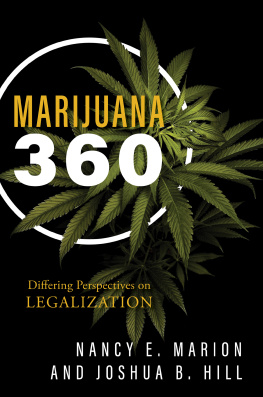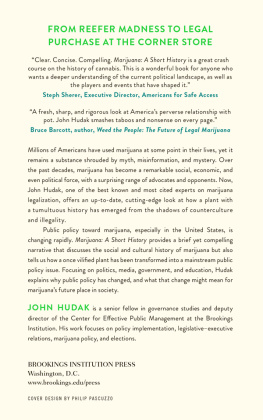
Thank you for purchasing this Scribner eBook.
Sign up for our newsletter and receive special offers, access to bonus content, and info on the latest new releases and other great eBooks from Scribner and Simon & Schuster.

or visit us online to sign up at
eBookNews.SimonandSchuster.com

CONTENTS

PROLOGUE

T he tall, mustached Texan on horseback looks like the quintessential cowboy with his Stetson hat, red bandana, dusty boots, and jingly spurs. His sunburned arms and leathery face show the wear and tear of a rugged outdoorsman. But Howard Wooldridge isnt your typical cowboy. Hes a retired police detective whos riding across the country to promote a provocative messagelegalize marijuana and other drugs.
Wooldridge, then fifty-four, and his trusty, one-eyed mare, Misty, began their journey in Los Angeles in March 2005, and it would end seven months and 3,300 miles later in New York City. With a bedroll and a bag of carrots tied behind the saddle, they clippety-clopped from coast to coast, attracting attention and generating press coverage as they passed through cities and towns. Along the way, they had to contend with rattlesnakes in Arizona and New Mexico, and the blistering summer heat of the Great Plains. With the exception of a few death threats, the folks they encountered were usually friendly and many offered the veteran lawman a meal and a place to stay overnight. The horse is a wonderful vehicle because people relate to the cowboy cop image, Wooldridge explained. Then we start talking politics.
Another surefire attention-grabber was the T-shirt he often wore, with the slogan: COPS SAY LEGALIZE DRUGS. ASK ME WHY.
During his transcontinental trek, Wooldridge lectured on criminal-justice issues at several colleges and universities. He spoke in a disarmingly folksy Yes, maam manner as he challenged students and other citizens to rethink their ideas about marijuana prohibition and the war on drugs. Wooldridge discussed his eighteen years as a police officer in Michigan and how he never once received a call for help from a battered housewife or anyone else because of marijuana. Yet Lansing-area cops spent countless hours searching cars and frisking teenagers in order to find some weed when the police could have been addressing far more serious matters.
Marijuana prohibition is a horrible waste of good police time, says Wooldridge. Every hour spent looking for pot reduces public safety. Based on his experience as a peace officer, he concluded that marijuana is a much safer drug than alcohol for both the user and those around them... Alcohol releases reckless, aggressive or violent feelings by its use. Marijuana use generates the opposite effects in the vast majority of people. Officer Wooldridge decided to protect and serve the public by focusing on booze-impaired motorists. His efforts earned him the nickname Highway Howie and kudos from Mothers Against Drunk Driving.
Wooldridge did not condone or advocate drug use of any kind, but he had enough horse sense to recognize that by banning marijuana the U.S. government essentially drives many people to drink. He felt that a substance should be judged by the actual harm it poses to the community. From a law-enforcement standpoint, Wooldridge asserted, the use of marijuana is not a societal problem... America needs to end pot prohibition.
Convinced that the laws against marijuana were a lot wackier than the weed, Wooldridge and several ex-cops formed a group called Law Enforcement Against Prohibition (LEAP) in 2002. Before long, LEAP would grow into a 40,000-member international organization composed of former prosecutors, undercover narcotics agents, judges, prison wardens, constables, and other disillusioned government functionaries who, after years of toiling in the trenches of a conflict with no conceivable end, had come to view the war on drugs as a colossal failure that fostered crime, police corruption, social discord, racial injustice, and, ironically, drug abuse itself, while squandering billions of tax dollars, clogging courtrooms and prisons, weakening constitutional safeguards, and impeding medical advances. LEAP condemned the war on drugs as Americas longest-running bipartisan folly. Wooldridge called it the most dysfunctional, immoral domestic policy since slavery and Jim Crow.
When law-enforcement veterans defect from prohibitionist orthodoxy, their arguments tend to be particularly potent. But Wooldridge understood that LEAPs views were very controversial. He knew that a long journey lay ahead, literally and figuratively, as he sought, one step at a time, to persuade Americans who had been exposed to years of government propaganda about the evils of marijuana. Many people reject the notion of legalizing drugs on moral and ideological grounds. They see marijuana first and foremost as a dangerous recreational drug, a harbinger of social decay. They believe the oft-repeated claim that smoking grass is a gateway to harder drugs.
The devils weed has long been a favorite target of U.S. officials who misstate or exaggerate the physical and psychological effects of cannabis, the preferred name for marijuana in medical and scientific circles. Although cannabis has a rich history as a medicine in many countries around the world, including the United States, federal drug warriors erected a labyrinth of legal and institutional obstacles to inhibit research and prevent the therapeutic use of the herb. They assembled a network of more than fifty government agencies and waged a relentless campaign against the marijuana scourge, a crusade that entailed sophisticated aerial surveillance, paramilitary raids, border patrols, sensors, eradication sweeps, the spraying of herbicides, national TV ads, antidrug classes in schools, and mandatory-minimum prison terms for marijuana offenders, including an inordinate number of black and Latino youth.
In 2005, the year that Wooldridge and Misty hoofed across the states, more than 750,000 Americans were arrested on marijuana-related charges, the vast majority for simple possession. And the tally would continue to grow, irrespective of who was president or which political party was in power. Despite billions of dollars allocated annually to curb cannabis consumption, half of all American adults smoke the funny stuff at some point in their lives. An estimated fifteen million U.S. citizens use marijuana regularly.
Marijuana is by far the most popular illicit substance in the United States, with 10,000 tons consumed yearly by Americans in their college dorms, suburban homes, housing projects, and gated mansions. Pot smoking cuts across racial, class, and gender lines. It has become such a prevalent, mainstream practice that cannabis users are apt to forget they are committing a criminal act every time they spark a joint.
The history of marijuana in America has long been a history of competing narratives, dueling interpretations. As Harvard professor Lester Grinspoon, M.D., observed in his 1971 book Marihuana Reconsidered, some felt that the road to Hades is lined with marihuana plants while others felt that the pathway to Utopia was shaded by freely growing Cannabis sativa . And so it continues. At the center of this dispute is a hardy, adaptable botanical that feasts on sunlight and grows like a weed in almost any environment. Marijuana plants are annuals that vary in height from three to fifteen feet with delicate serrated leaves spread like the fingers of an open hand. Ridged down the middle and diagonally veined, cannabis leaves are covered, as is the entire plant, with tiny, sticky hairs. The gooey resin on the leaves and matted flower tops contains dozens of unique oily compounds, some of which, when ingested, trigger neurochemical changes in the brain. The hotter and sunnier the climate, the more psychoactive resin the plant produces during a three-to-five-month outdoor growing season. Known for its euphoria-inducing properties, hashish or kif is the concentrate made from the resin of female marijuana.
Next page
